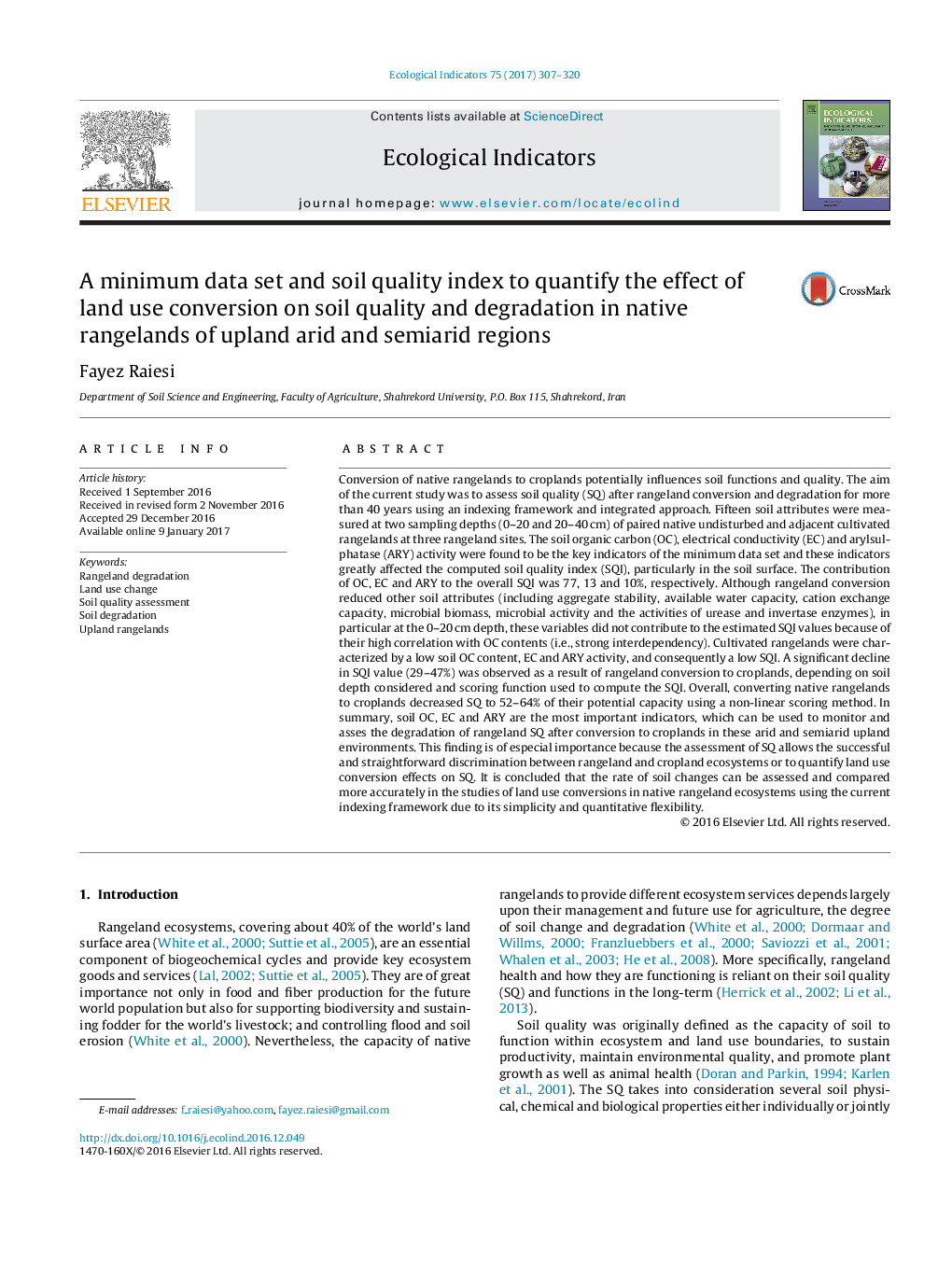| Article ID | Journal | Published Year | Pages | File Type |
|---|---|---|---|---|
| 5741822 | Ecological Indicators | 2017 | 14 Pages |
â¢We assessed crop cultivation effect on soil quality index (SQI) in rangelands.â¢Organic carbon and salinity were the key indicators of soil changes and SQ.â¢Assessing SQI allowed a better discrimination between rangeland and cropland sites.â¢Long-term cultivation and disturbance in native rangelands degraded severely SQ.â¢Cropland soils functioned at 52-64% of the potential capacity of rangelands soils.
Conversion of native rangelands to croplands potentially influences soil functions and quality. The aim of the current study was to assess soil quality (SQ) after rangeland conversion and degradation for more than 40 years using an indexing framework and integrated approach. Fifteen soil attributes were measured at two sampling depths (0-20 and 20-40Â cm) of paired native undisturbed and adjacent cultivated rangelands at three rangeland sites. The soil organic carbon (OC), electrical conductivity (EC) and arylsulphatase (ARY) activity were found to be the key indicators of the minimum data set and these indicators greatly affected the computed soil quality index (SQI), particularly in the soil surface. The contribution of OC, EC and ARY to the overall SQI was 77, 13 and 10%, respectively. Although rangeland conversion reduced other soil attributes (including aggregate stability, available water capacity, cation exchange capacity, microbial biomass, microbial activity and the activities of urease and invertase enzymes), in particular at the 0-20Â cm depth, these variables did not contribute to the estimated SQI values because of their high correlation with OC contents (i.e., strong interdependency). Cultivated rangelands were characterized by a low soil OC content, EC and ARY activity, and consequently a low SQI. A significant decline in SQI value (29-47%) was observed as a result of rangeland conversion to croplands, depending on soil depth considered and scoring function used to compute the SQI. Overall, converting native rangelands to croplands decreased SQ to 52-64% of their potential capacity using a non-linear scoring method. In summary, soil OC, EC and ARY are the most important indicators, which can be used to monitor and asses the degradation of rangeland SQ after conversion to croplands in these arid and semiarid upland environments. This finding is of especial importance because the assessment of SQ allows the successful and straightforward discrimination between rangeland and cropland ecosystems or to quantify land use conversion effects on SQ. It is concluded that the rate of soil changes can be assessed and compared more accurately in the studies of land use conversions in native rangeland ecosystems using the current indexing framework due to its simplicity and quantitative flexibility.
